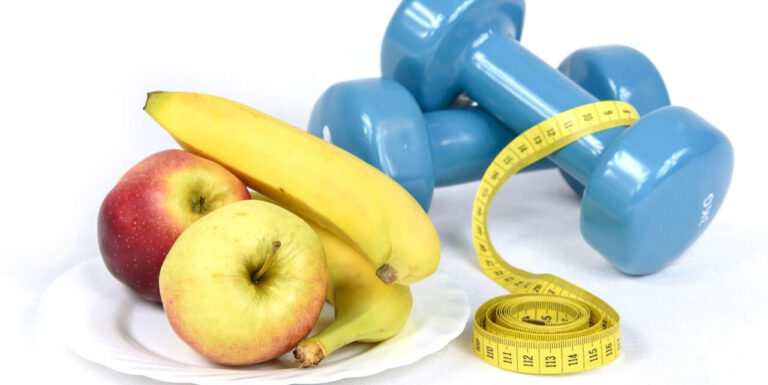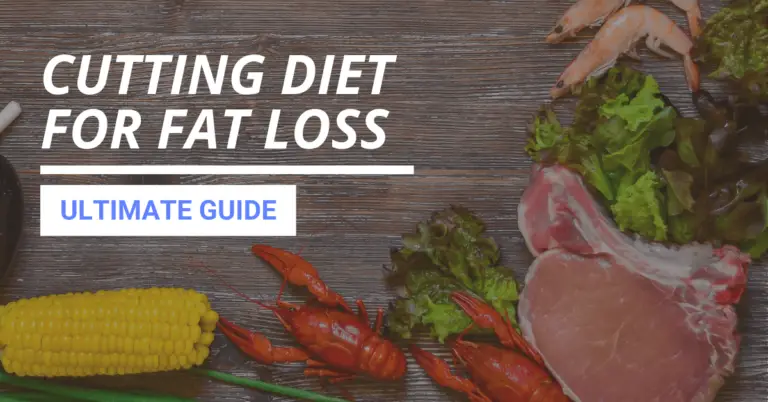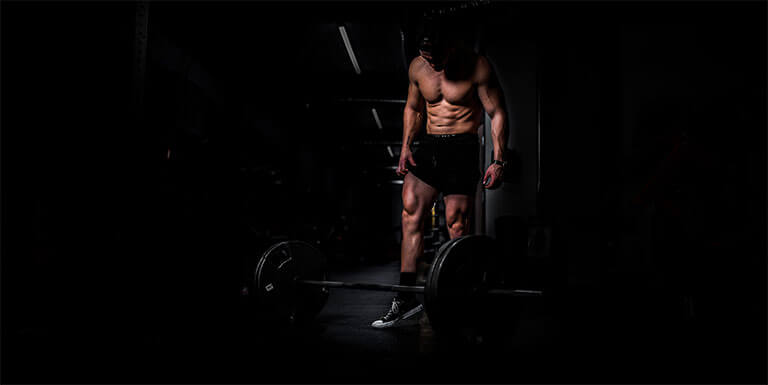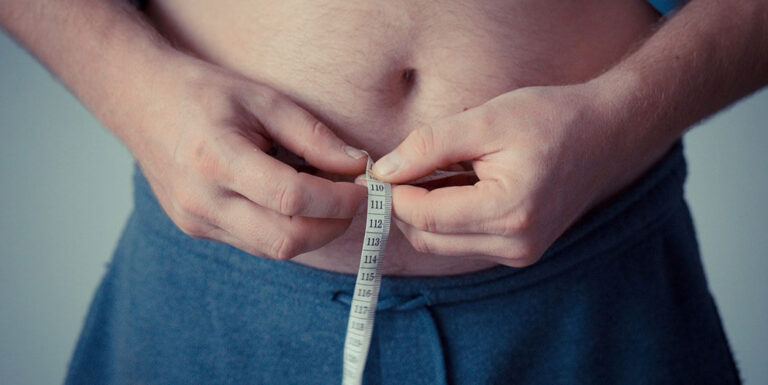How to Cut After Bulking: The Ultimate Guide
You’ve been following a bulking and cutting cycle, and the time has come to cut. Cutting after bulking is a tough process that requires patience and care if you want to make sure that you lose body fat while preserving as much muscle mass as possible.
Most people who bulk don’t think about how they’ll cut afterwards, which often leads to them losing more lean muscle mass than necessary.
This guide will help you avoid this common mistake. I’ll walk through the entire process step-by-step so that you can lose body fat with confidence!
But first, some fundamentals:
- What Are Bulking And Cutting Phases
- Why Should You Cut After Bulking?
- Common Challenge When Cutting After Bulking
- Step by Step Guide to Cutting After Bulking
- Frequently Asked Questions About Cutting After Bulking
What Are Bulking And Cutting Phases?
There are two main phases in bodybuilding: bulking and cutting.
But what’s the difference between cutting and bulking? Let’s find out!
What is Bulking
Bulking is the phase where you eat more calories than your body needs in order to gain muscle. During this phase, you should be lifting weights and focus on getting stronger in order to increase muscle growth.
What is Cutting
The cutting phase is the opposite of the bulking phase. You eat fewer calories than your body needs in order to lose body fat. This fat loss phase is usually done while lifting weights to maintain muscle and doing some cardio to burn additional calories throughout the day.
Bulking and Cutting Process
The process of bulking and cutting can be a little confusing, so let’s start with the basics.
- Choose whether to bulk or cut, depending on your current physique. If you’re not sure which one is right for you, check out this guide on whether you should bulk or cut if you are skinny fat.
- Once you’ve made your decision, you would then bulk or cut (depending on your decision) for an appropriate amount of time. While cutting usually takes 3 -5 months, depending on your body fat percentage, bulking typically lasts around 4 – 6 months, as it is much more difficult to gain muscle than lose fat.
- Then, once you have made sufficient progress you would switch to another phase. For example, you could consider cutting if got to a single-digit body fat percentage. On the other hand, if you have put on a significant amount of muscle but lost visibility in your abdominal area, you could transition into a cut.
- From there, you would alternate between the two processes. Bulking for a certain amount of time, then cutting for some period of time. Doing this the right way helps you ensure continuous progress.
Recommended Reading: Should I Cut or Bulk? (Here’s How To Decide!)
Why Should You Cut After Bulking?
The main reason to cut after bulking is to get rid of the body fat you accumulated while bulking. If you do not cut, you will likely become overweight and/or obese.
Another reason to cut is so that your muscles will be more visible.
If you follow the lean bulk diet approach, you would not need to cut as long and frequent as with a dirty bulking diet.
Recommended Reading: Clean Bulk vs Dirty Bulk – Which One is Best to Gain Muscle?
Furthermore, if you choose to eat at maintenance or a very small calorie surplus, in order words “maintain” you may not need to cut at all. But then again, following this approach you might be limiting your muscle growth potential.
Common Challenge When Cutting After Bulking
The main challenge when cutting after bulking is that most people put on too much fat during their bulking phase.
As a result, they need to be in a fat loss phase for a longer period of time. This can be difficult because cutting for too long or too aggressively can lead to muscle loss. The last thing you want is to lose muscle after putting so much effort into building it in the first place.
When I first began my fitness journey, I found myself unintentionally bulking for too long which resulted in excess fat gain. In order to lose fat, I had to be in a caloric deficit for an extended period of time, which unfortunately contributed to me losing muscle mass.
After completing one such bulking and cutting cycle, I realized that I looked exactly the same as when I started it. This was because I got too fat in the first place and then lost muscle while trying to lose fat due to cutting after bulking the wrong way.
Now, I am going to explain how to properly cut weight after bulking and minimize the chances of muscle loss.
Step by Step Guide to Cutting After Bulking
When do you know when to start a cut after bulking?
Here are some of the reasons why you would want to transition into a cut:
- You have reached your target bodyweight
- You want to get ready for an event – wedding, holiday on a beach, etc.
- You got tired of bulking
- You lost the visibility of your abs (the most common one)
Regardless of the reason why you decided to get lean, here are the steps to follow when cutting after bulking.
1. Determine Your Current TDEE
The first step is to determine your current Total Daily Energy Expenditure (TDEE). This will help you create a caloric deficit while still ensuring that you can maintain as much muscle as possible.
There are multiple ways to calculate your TDEE, but the easiest way is to use a TDEE calculator that takes into account your gender, age, activity level, weight, and height.
Another way is to track your daily food intake and monitor your body weight fluctuations. It’s also worth doing it after you have estimated your TDEE using a calculator to check the accuracy of the output calculator gave you.
For a few weeks, keep a close track of your food intake and weigh yourself on a regular basis.
If you gain weight, it’s possible that you’re eating more than your TDEE. Reduce your total calories by a few hundred calories to bring it in line with your current TDEE.
If you find that your body weight is consistently decreasing, you are consuming less than your TDEE. In this situation, you should increase your caloric intake by a few hundred calories to be in line with your TDEE.
Finally, if your bodyweight remains constant, you are eating at around your TDEE level.
NOTE
When determining your current TDEE using the latter approach, it’s crucial that you are weighing your food and tracking calories correctly using an app like MyFitnessPal. Otherwise, you will inaccurately estimate your TDEE and end up consuming more or fewer calories than you should.
SUMMARY
Determine your TDEE by using a calculator that takes into account your gender, age, activity level, weight, and height. You can also track your daily food intake and monitor your body weight fluctuations over a period of weeks.
2. Create a Caloric Deficit to Lose Fat
Next, in order to lose fat, you need to create a caloric deficit. This means that you are burning more calories than you are eating.
There are several ways to do this:
- Reduce your daily calories by about 20-25%
- Burn extra calories per day through cardio exercise
- A combination of both of these methods
I recommend decreasing your daily caloric intake by about 20-25% to create a calorie deficit.
EXAMPLE
A person who weighs 70 kg/155 lb and burns 2500 calories each day would require 2000 calories each day.
SUMMARY
Create a caloric deficit by reducing your daily calorie intake by 20-25%, or by burning extra calories through cardio exercise or a combination of both.
3. Lose Weight at an Optimal Rate
After you have created an appropriate caloric deficit you should expect to lose weight at an optimal rate.
You want to follow a recommended weight loss rate of about 0.5 and 1 kilogram (1 and 2 pounds) every week, on average (1). Or as another evidence-based recommendation states – about 0.5 to 1% of body weight per week (2).
Losing body fat at such a steady rate would help you maximize muscle retention.
SUMMARY
If you want to lose weight while maximizing muscle retention, you should aim to lose about 0.5 to 1% of your body weight each week.
4. Calculate Your Macros for a Cutting Phase
Once you have determined your TDEE and created a caloric deficit, the next step is to calculate your macros for cutting.
Your macros will be slightly different when cutting than when bulking.
To cut, you want to consume a higher percentage of protein (about 30-35%), as it reduces muscle loss when dieting, fewer carbs (about 40-45%) and your fat intake should be around 20-25% (3, 4).
Protein is very vital since research shows that higher daily protein consumption is far superior to decreased daily protein intake, especially when it comes to muscle retention while dieting.
Recommended Reading: How to Calculate Macros for Cutting
SUMMARY
Calculate macros for cutting in order to put yourself in the best possible position to maintain muscle while dieting. The recommended percentage breakdown of protein, carbs, and fats is 30-35%, 40-45%, and 20-25%, respectively.
5. Make Your Diet Plan
A well-made diet plan will help ensure that you are able to reach your goals while avoiding common dieting pitfalls like binging or cheating.
It’s also important to have some variety in your diet so that you don’t get bored and stray from your nutrition program.
I suggest creating a weekly meal plan with breakfast, lunch, dinner and snacks accounted for. You can either find existing meal plans online or create your own meal plan.
Now let’s say you followed a more of a dirty bulk approach where you didn’t track your calories or macros and just ate whatever you wanted. In this case, I would recommend cleaning up your diet first.
Just by switching junk foods to eating minimally processed foods, it will be much easier to follow a calorically restricted diet.
After a while, you could also start including some of the low-calorie high volume foods that will fill you up and make you feel more satisfied.
Recommended Reading: Cutting Grocery List For Any Budget (With Template)
SUMMARY
Create a weekly meal plan with breakfast, lunch, dinner, and snacks accounted for.
6. Track Your Calories and Macros
Next, measure and track your calories and macros using an app like MyFitnessPal or my free calorie tracker spreadsheet. This will ensure that you are staying on track with your diet and reaching your goals.
If you’re not currently tracking your food intake, I highly recommend starting as it will help give you a better understanding of how many calories you are eating each day and which foods contain what macronutrients.
If you want to learn more about what foods contain what macronutrients, check out this macro cheat sheet.
If you’re having trouble hitting your calorie and macronutrient requirements, then I recommend you check out the article on why you’re hitting calories but not macros, as well as how to correct it.
SUMMARY
Track your calories and macros using an app like MyFitnessPal so you can stay on track with your diet and reach your goals.
7. Optimize Pre and Post Workout Nutrition
Another way to help you lose fat while preserving muscle is by paying attention to your pre and post-workout nutrition.
Appropriate nutrient timing, the time you eat specific nutrients, to some degree, can help you improve training performance and recover faster (5).
It’s recommended to consume protein at evenly spaced intervals throughout the day (approximately every 3 hours). A good rule of thumb is to consume a high-quality protein source, such as whey protein, egg whites or lean meat, before and after workouts. This will provide your body with the necessary amino acids needed to preserve muscle mass.
In addition, having higher carbohydrate intake around workouts (pre and post-training sessions) can help boost performance and reduce fatigue.
SUMMARY
Consume protein evenly throughout the day, and have higher carbohydrate intake around workouts.
8. Do Weight Training to Maintain or Gain Muscle Mass
In order to maintain or even gain muscle while dieting, you’ll need to do some form of weight training.
Ideally, you should be lifting weights at least 2 – 3 times per week for about 45-60 minutes per session.
During these workouts, concentrate on getting stronger (or at least maintaining your strength levels) by doing mostly compound exercises like squats, deadlifts, bench presses, etc., which activate more muscle mass than single-joint isolation movements.
Furthermore, you want to stick to low to medium repetition ranges. The number of repetitions performed in each set is inversely proportional to the weight lifted. The heavier the weight, the fewer the repetitions you can do.
SUMMARY
Focus on getting stronger in compound exercises. Do 6 to 12 reps with a given weight and lift as heavy as possible while avoiding muscle failure (the point where you can’t do another rep with a good form).
9. Track Your Workouts
Track your workouts and progress in the gym using a training journal or an app.
You can also use my handy Google Sheets workout template. It allows you to track sets, reps, weight, the total volume, as well as create your own workout programs.
This will help you stay motivated and see the results of all your hard work in the gym.
SUMMARY
Track your workouts and record the sets reps and weight for a given exercise to ensure you are progressing (or at least maintaining your strength level). Use a training journal, an app, or my Google Sheets workout template to help you stay organized and motivated.
10. Consider Incorporating Some Cardio
If you want to include some cardio in your cutting program, that’s totally fine.
Especially at the start of the cut right after bulking, I’d advise you to avoid excessive amounts of exercise and instead do it at a lower intensity.
For instance, aim for around 30-90 minutes of low-intensity steady-state cardio (like walking or some biking) each week. This will help burn a small number of calories without interfering with your weight training goals.
It will also allow you to consume a bit more food without significantly impacting your body composition.
Over time, you could consider increasing the total amount of cardio and use it as a tool to increase caloric deficit when needed.
SUMMARY
Start by including around 30-90 minutes of low-intensity steady-state cardio per week to help burn additional calories without negatively impacting your weightlifting progress. Over time, consider increasing the amount of cardio to create a larger caloric deficit.
11. Once in a While Come Out Of Deficit
If you’re feeling good and making progress, there is no need to come out of the deficit. But the longer you are in a cut, the likelihood of your progress slowing down increases. You might also experience an increase in hunger and tiredness.
In the latter case, it might be a good idea to take a break from the diet and eat at maintenance for a week or two.
This can help restore energy levels, motivation, and training performance. Just make sure you don’t go overboard with eating and undo all of your hard work!
After that, you can jump back into cutting mode. Just make sure that when you do so, you resume tracking your food intake and workouts closely.
You can also consider incorporating refeed days into your cutting diet plan.
A refeed day is a great way to break up your diet and give your body a well-deserved break. On this day, you would eat at a controlled caloric surplus, where a vast majority of calories would come from eating carbs. This can help you with fat loss by counteracting the negative effects of calorie restriction.
SUMMARY
If you’ve been dieting for an extended period of time, consider taking a break from the diet to eat at maintenance or incorporating refeed days. This will help boost your metabolism and get you back on track.
12. Take Your Supplements
In addition to a good diet and training program, supplements can be helpful when cutting after a bulking phase.
Although not all supplements are worth their price and you can achieve great results in bodybuilding without supplements, these supplements are worth the money and you should consider incorporating them into your diet:
- Protein Powder
- Creatine Monohydrate
- Pre-Workout Supplements – Caffeine, Citrulline Malate and Beta-Alanine
- Multi-Vitamins and Omega 3
SUMMARY
In addition to a good diet and training program, incorporating supplements can be helpful when cutting. Consider including the following supplements into your diet: protein powder, creatine monohydrate, pre-workout supplements (caffeine, citrulline malate and beta-alanine), multi-vitamins and omega.
13. Prioritize Sleep and Avoid Stress
Furthermore, getting adequate sleep and managing stress is important to maintain a high level of athletic performance and recovery (6).
So make sure that you get enough sleep (7 – 9 hours every day) and try to avoid stressful situations as much as possible. This will help you maintain your energy levels, motivation, and training performance.
SUMMARY
Prioritize getting enough sleep (7 – 9 hours every day) and avoid stress.
14. Measure Your Progress
To ensure that you are progressing and your cut is proceeding as planned, do the following:
- Weigh yourself daily, compare median weight week by week
- Take body measurements every month and compare them to previous results
- Take monthly progress photos and compare them to older photos
This will help you stay motivated as you will be able to visually see the changes in your body composition.
Remember that everyone progresses at different rates, so don’t get discouraged if you aren’t losing fat every week. As long as you are making small improvements over time, and following the plan, you are on the right track!
SUMMARY
Weigh yourself on a regular basis, take body measurements every month, take monthly progress photographs, and compare your results with previous ones.
15. Make Adjustments
If you’re not losing weight at an ideal weight loss rate, or if you are plateauing, it may be necessary to make some adjustments to your diet and training program.
You would typically hit a plateau once your bodyweight decreases and you require a lower calorie intake to maintain your current weight in comparison to when you calculated your cutting macros at the start.
This is completely normal, and something you would expect to happen.
If you’re losing less than 0.5 – 1% of body weight per week, you can either decrease your calories or increase your daily calorie expenditure through exercise.
You may decrease your calorie intake by 100-200 calories and/or add an extra 20-30 minutes of exercise (depending on the form of cardio).
These tweaks should put you back into a calorie deficit which will allow you to continue losing weight at a steady rate.
Remember that this is a process that will require some trial and error.
SUMMARY
If you’re not losing weight at a recommended rate (0.5 – 1% of body weight per week), you may need to decrease your calorie intake by 100-200 calories and/or add an extra 20-30 minutes of exercise to put yourself back into a caloric deficit.
Frequently Asked Questions About Cutting After Bulking
Answers to some of the most common questions about cutting after bulking are listed below.
How To Cut After Bulking Without Losing Muscle?
To cut after bulking without losing muscle, you should focus on reducing your calorie intake gradually, rather than drastically. Make sure to keep your protein intake high and do some form of weight training regularly.
How To Transition From a Cut to a Bulk?
When transitioning from a cutting phase to lean bulk, you’ll want to gradually increase your caloric intake while maintaining your current weight. Start by adding an extra 250-500 calories per day to your diet, adjust lean bulk macros, and monitor your weight and body composition closely.
How Long Does It Take To Cut After Bulking?
The length of your cutting phase after bulking depends on the amount of body fat you gained during a bulk and the level of leanness you want to achieve. A typical cut after a bulk would take somewhere between 2 – 4 months for most individuals.
Is It Easier To Cut After Bulking?
Yes, it is typically easier to cut after bulking. This is because a bulk phase results in an increase in metabolism due to higher consumption of food. It’s usually easier to reduce weight once you establish a caloric deficit since your starting baseline for calorie intake is higher than it would be if you didn’t bulk prior to a cut.
Final Thoughts
Well, there you have it!
The complete guide on how to shred after bulking. If you follow these steps, you should be able to cut without losing any muscle mass.
Stay patient and stay focused, the end result will be worth it!
Do you have any pointers for people who want to get lean after a bulk?
Please leave them in the comments section below!
References
1. Garthe I, Raastad T, Refsnes PE, Koivisto A, Sundgot-Borgen J. Effect of two different weight-loss rates on body composition and strength and power-related performance in elite athletes (2011). Retrieved from https://pubmed.ncbi.nlm.nih.gov/21558571/
2. Helms ER, Aragon AA, Fitschen PJ. Evidence-based recommendations for natural bodybuilding contest preparation: nutrition and supplementation (2014). Retrieved from https://pubmed.ncbi.nlm.nih.gov/24864135/
3. Helms ER, Zinn C, Rowlands DS, Brown SR. A systematic review of dietary protein during caloric restriction in resistance trained lean athletes: a case for higher intakes (2014). Retrieved from https://pubmed.ncbi.nlm.nih.gov/24092765/
4. Mettler S, Mitchell N, Tipton KD. Increased protein intake reduces lean body mass loss during weight loss in athletes (2010). Retrieved from https://pubmed.ncbi.nlm.nih.gov/19927027/
5. Kerksick CM, Arent S, Schoenfeld BJ, Stout JR, Campbell B, Wilborn CD, Taylor L, Kalman D, Smith-Ryan AE, Kreider RB, Willoughby D, Arciero PJ, VanDusseldorp TA, Ormsbee MJ, Wildman R, Greenwood M, Ziegenfuss TN, Aragon AA, Antonio J. International society of sports nutrition position stand: nutrient timing (2017). Retrieved from https://pubmed.ncbi.nlm.nih.gov/28919842/
6. Bonnar D, Bartel K, Kakoschke N, Lang C. Sleep Interventions Designed to Improve Athletic Performance and Recovery: A Systematic Review of Current Approaches (2018). Retrieved from https://pubmed.ncbi.nlm.nih.gov/29352373/



![Mini Cut: What It Is and How To Do It Right [Ultimate Guide]](https://gfitnessonline.com/wp-content/uploads/2022/04/man-with-prepared-meals-768x385.jpg)

